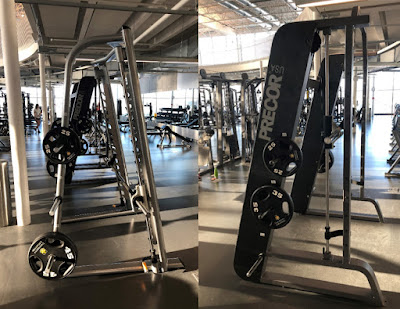Fitness Framework Part 2
By Adam Toffan, M.Sc, NSCA-CSCS, CSEP-CEP,
Assistant Fitness Training and Assessment Coordinator, UM Recreation Services
Last week in our fitness framework, I discussed some fitness recommendations, including 10,000 steps in a day and 150min of moderate to vigorous exercise in a week. In part 2 of our fitness framework series, I want to focus on higher-intensity workouts. While getting 10,000 steps is a great way to move through the day, it does not address the upper levels of our aerobic/anaerobic systems. There is a massive trend towards short, intense workouts with different terminology that sometimes get misused. In this blog, I want to explain the different types of intense workouts and how they are meant to be executed.
Tabata
The first exercise I want to talk about is Tabata. Tabata is a variation of high-intensity interval training and generally is meant to be very intense. Tabata is a short circuit of about 4 minutes with 20-second work bouts followed by 10 seconds of rest (2:1 work/rest ratio). These short bursts of exercise target your anaerobic energy system and achieve an intensity of around 90% of your max heart rate. Because of this intensity, it is not for everyone but has some great benefits. Tabata workouts help improve VO2max (maximum oxygen consumption), improve recovery, and burn many calories relative to the length of the workout.
High-intensity interval training
High-intensity interval training (HIIT) became very popular for similar reasons to Tabata. It offers an opportunity to get a lot of work done in a short period of time. From a workout design perspective, the main difference between Tabata and HIIT workouts is that HIIT workouts largely target the aerobic system with longer intervals and work to rest ratios closer to 1:1. Bouts of exercise range from 30 seconds up to 4 minutes in length. Because these intervals are longer than Tabata exercises, the intensity is usually around 50-80% of max heart rate. One of the biggest training effects of this style of workout is improvements in V02max and endurance. Besides time efficiency, these various high-intensity workouts are important for health because they can improve peak oxygen consumption (VO2peak), which is the strongest predictor of future health, all-cause mortality, and cardiovascular risks.
High-intensity vs. moderate
While moderate continuous training is the gold standard in many guidelines, HIIT and SIT (sprint interval training) workouts are more efficient and have a comparable effect on VO2max. These higher intensity workouts also help preserve muscle mass better than long steady-state aerobic exercise and help boost metabolism.
Lower-intensity intervals
There are also lower-intensity intervals of various lengths. These intervals are usually between 65 and 75% of VO2max. These workouts will help improve endurance but have less effect on VO2max. These workouts help improve work capacity by improving the delivery of oxygen to the muscles and better utilization of oxygen by the muscles.
Balance is king!
Intense exercises like HIIT workouts save a lot of time, but it is important to remember that workouts of various intensities have their own training effect. So, while each has a place and purpose, it is important to maintain a balanced exercise plan to maximize overall health. It is also important to remain moving the rest of the day. Cramming an intense workout into 30 minutes is not an excuse to sit on the couch the rest of the day. Ideally, you would have workouts of varying intensity throughout the week and regularly move each day. If you are short on time or want to add some intensity to your workouts, try some of these workout styles but be prepared to sweat!
Sources
Carey, Daniel G. (2009). “Quantifying Differences in the “Fat Burning” Zone and the Aerobic Zone: Implications For Training,” Journal of Strength and Conditioning Research. Volume 23(7). Pp. 2090-2095.
Ito, S. (2019). “High-intensity interval training for health benefits and care of cardiac diseases - The key to an efficient exercise protocol.” World Junior of Cardiology. Vol. 11(7). Pp. 171-188.
Larsen, P.B., Jenkins, D.G. (2002). “The Scientific Basis for High-Intensity Interval Training: Optimizing training programmes and maximizing performance in highly trained endurance athletes.” Sports Medicine. Vol 32(1). Pp. 53-73.




personal training online was also introduced after COVID-19 outreach when people were not allowed to interact physically and the government advised the public to stay home and use surgical masks, sanitizers etc. Numerous fitness clubs in Toronto are providing online and offline training to gym athletes in which OBFGYM is on the top.
ReplyDeleteI read your article and it’s informative.
ReplyDeleteI always share your blog post links on my
social media platforms and in different groups.
I am also writing some related articles.
I really like your blog, keep it up!
Nice post thank you for sharing.
https://iwillhavethat.com/how-to-choose-the-right-climbing-shoes/